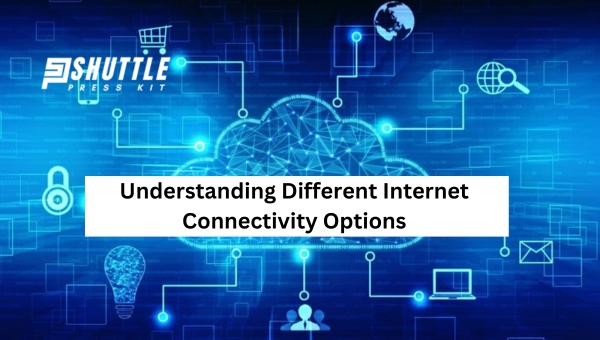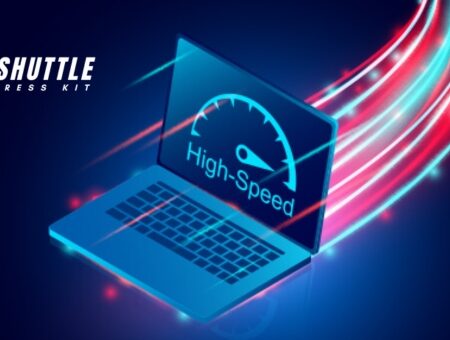Are you tired of slow internet? Can’t stream your favorite shows without buffering? Let me tell you, having High-Speed Internet can change all that. Trust me, picking the best one can be a game-changer.
Choosing the right high-speed internet for you depends on how much you use it and which activities are most important to you. If streaming HD videos or gaming is what you love, go for faster speeds. But if it’s just checking emails and web browsing, a basic plan would do just fine. It’s all about finding that sweet spot for your needs and budget!
Overview of Internet Connectivity Options
The internet has become an indispensable part of daily life, powering everything from home entertainment to global business operations. As technology has evolved, so have the types and qualities of internet services available.

Understanding these options can help consumers and businesses select the best connectivity solution for their needs. Here’s a brief look at the primary forms of internet service:
- Digital Subscriber Line (DSL): Utilizes existing telephone lines to provide internet access. DSL is widely available but often limited by distance from provider facilities, impacting speed.
- Cable Internet: Delivers broadband connectivity through coaxial cables from cable TV providers. Speeds can be high, but shared bandwidth may lead to congestion during peak hours.
- Fiber Optic Service: Offers the fastest speeds by transmitting data as light signals through optical fibers. Limited availability in some areas but expanding rapidly.
- Satellite Internet: Provides coverage in rural and remote regions using geostationary satellites. While it covers wide areas, latency can be higher, and service may be affected by weather conditions.
- Fixed Wireless Internet: Relies on radio waves transmitted from a tower to an antenna installed at your location. It’s an effective solution in areas where cables and fibers are not feasible.
By exploring these options, users can identify which type of internet service best aligns with their speed requirements, budget considerations, and geographical constraints.
Also Read: Starlink Volcano Mount Guide: Easy DIY Installation Tips
Understanding Different Internet Connectivity Options
Having a basic understanding of different Internet connectivity options is essential in today’s connected world. This involves knowing how different choices like broadband, DSL, fiber optics, and satellite internet work.

It also means understanding the pros and cons of each option to make an informed decision about what suits your needs best.
DSL Internet Service
Digital Subscriber Line (DSL) internet service is a reliable method of connecting to the internet that utilizes existing telephone lines without disrupting voice service. This technology offers a broadband connection, allowing you to enjoy high-speed internet for browsing, streaming, and downloading. Here are the key features and steps involved in getting started with DSL internet:
- Utilizes Existing Telephone Lines: DSL leverages your current telephone line setup, meaning there’s no need for extensive rewiring at your home.
- Simultaneous Use with Phone Calls: Unlike older dial-up services, DSL lets you use the internet and make phone calls at the same time.
- Speeds Dependent on Distance: Your proximity to the service provider’s hub significantly affects connection speeds; closer locations tend to enjoy higher speeds.
- Asymmetrical Speeds: Generally offers faster download speeds compared to upload speeds, catering well to average user demands such as streaming videos or downloading files.
- Availability May Vary: Not all areas have access to DSL services due to technological and infrastructure limitations.
- DSL Providers: Companies like AT&T, CenturyLink, and Verizon are among the many providers offering various DSL plans tailored to meet different needs.
By understanding these points about DSL Internet service, consumers can better evaluate if it aligns with their connectivity requirements and lifestyle needs.
Cable Internet
Cable internet leverages the same infrastructure used for delivering cable television to provide high-speed internet access. This form of broadband is known for its capacity to offer fast download speeds, making it a popular choice among households and businesses. Here’s a concise breakdown of what makes cable internet stand out:
- Doesn’t Need Phone Lines: Unlike traditional DSL, cable internet operates over coaxial cable networks, freeing up phone lines and generally offering higher speeds.
- Shared Bandwidth Impact: The performance can fluctuate during peak hours as the bandwidth is shared among users in the same locale.
- Widely Accessible: It’s commonly available, especially in areas already serviced by cable television providers, although not universally so.
- Provider Examples: Notable providers include Comcast, Cox, and Spectrum among others.
By understanding these key aspects, users can better decide if cable internet meets their needs concerning speed, availability, and potential for bandwidth throttling during busy times.
Fiber Optic Internet
Fiber optic internet is renowned for its super-fast data transmission speeds, leveraging light to transfer information across vast distances via thin glass strands. This technology not only supports the highest available internet speeds but also offers reliability that surpasses traditional broadband options. Its implementation, however, varies based on geographic and service provider considerations.
- Ultra-High-Speed Connection: Fiber optic technology enables internet speeds that can rival the speed of light, making it possible to handle demanding online activities with ease.
- Widely Supported by Major ISPs: Numerous providers including Verizon, AT&T, and CenturyLink have extensive fiber-optic networks offering various plans to cater to different user needs.
- Limited Availability: Despite its benefits, fiber optic’s reach is still growing. It’s more common in urban areas compared to rural regions where infrastructure may not yet be in place.
Also Read: Starlink Cable Routing Kit: Easy Install Guide!
Satellite Internet Services
Satellite internet is a type of internet service that utilizes satellite technology orbiting the earth to provide internet connectivity. This form of internet access does not rely on traditional ground-based infrastructure like cables or phone lines, making it an ideal solution for remote and rural areas where other forms of high-speed internet are not feasible. Here’s how you can explore and understand satellite internet services:
- Understand the Basics: Recognize that satellite internet works by sending data from your device to a satellite in space, which then relays the data to an earth station before connecting you to the web. This process allows for global coverage, crossing geographical challenges that terrestrial networks face.
- Consider Equipment Needs: Acknowledge that you will need specific equipment to use satellite Internet, including a compatible satellite dish and modem. These tools receive signals from satellites in orbit and convert them into usable internet connections inside your home or business.
- Assess Availability: Check if your area has access to satellite internet services. Due to its expansive reach, most locations worldwide can connect via this method; however, service levels might vary due to geographic features or current technological capabilities.
- Evaluate Speeds and Data Packages: Understand that while historically slower than fiber or cable options due to its higher latency from long-distance signal travel, modern improvements have significantly boosted speeds and reliability. Investigate available packages since providers often offer different speed tiers and data limits suitable for various usage needs.
Mobile Broadband
Mobile broadband is a type of high-speed internet access that utilizes cellular networks, similar to how your smartphone accesses the internet. By leveraging cell phone towers, mobile broadband provides a wireless connection for various devices, enabling internet access on the go. This method is particularly advantageous for those without access to traditional wired broadband or for users requiring connectivity across different locations.
- Device Compatibility: Works with a wide range of devices including smartphones, laptops, tablets, and specially equipped portable modems.
- Connection Speed: Offers varying speeds that generally align with cellular network generations (3G, 4G LTE, 5G), facilitating rapid communication close to the speed of light.
- Data Plans and Usage: Typically governed by data usage plans with set limits; exceeding these limits may result in additional charges or speed throttling.
- Service Providers: Available through numerous carriers such as Sprint (now part of T-Mobile), Verizon Wireless, and AT&T among others.
- Coverage Area: Accessibility is widespread yet dependent on cellular tower distribution; more remote areas might experience reduced service levels.
By considering these key points about mobile broadband, users can better understand how it functions as an alternative or complementary solution to traditional internet connectivity methods.
Also Read: Guide to Stow Your Starlink: The Art of Satellite Setup
Frequently Asked Questions
How do I know which high-speed internet service suits my needs?
Look at your online activities. For basic browsing and emailing, most services work, but streaming or gaming may require faster options.
Can I get high-speed internet without a phone line?
Yes, many alternatives, such as fiber optic, satellite, and fixed wireless, offer high-speed internet without needing a traditional phone line.
Will the type of device I use affect my internet speed choice?
Yes, newer devices with updated technology often support faster internet speeds, enhancing your online experience.
Is it possible to upgrade my internet speed later?
Most providers allow upgrades to your plan, enabling you to choose faster speeds as your needs evolve.
Conclusion
Choosing the right high-speed internet option ultimately depends on your specific needs, location, and budget. If you are in a densely populated urban area, fiber-optic or cable internet may offer the best speed and reliability.
For those in rural areas, satellite or DSL might be the more viable options despite potential limitations in speed or latency. Consider what’s important for you: Is it raw speed for gaming and streaming, or is stability and upload speed for work from home?
